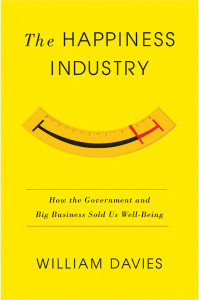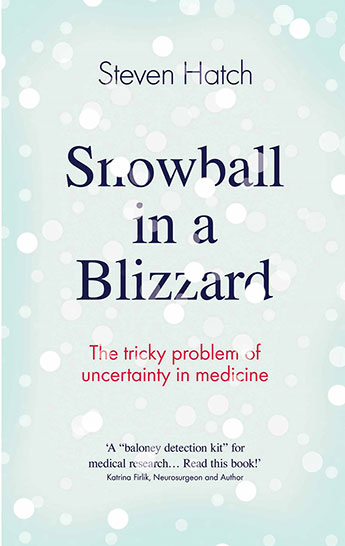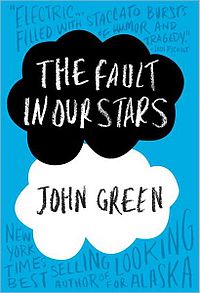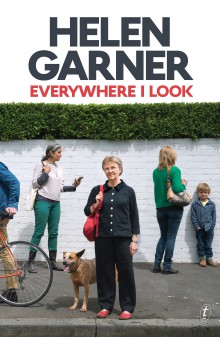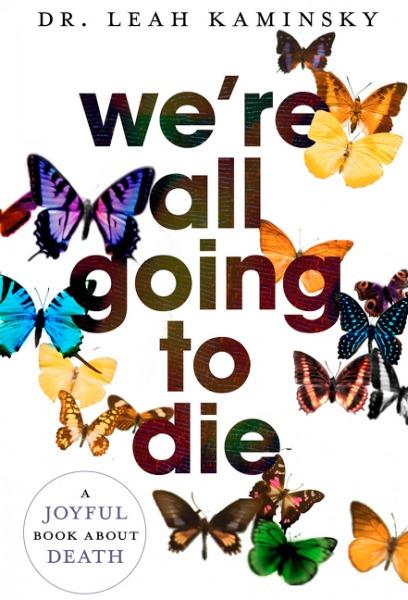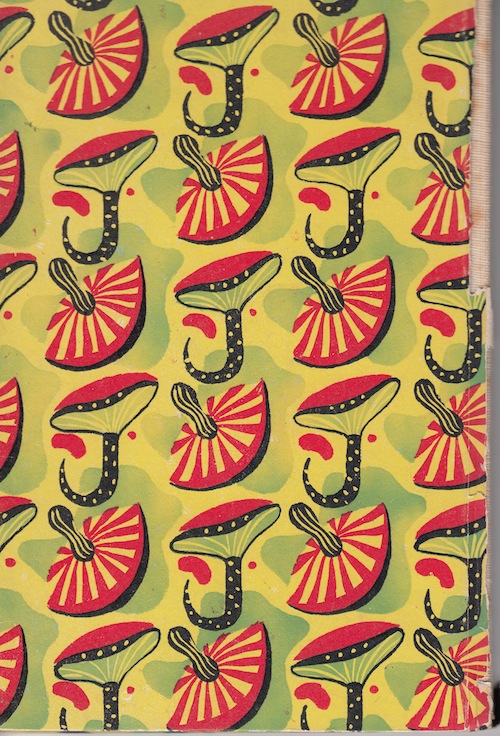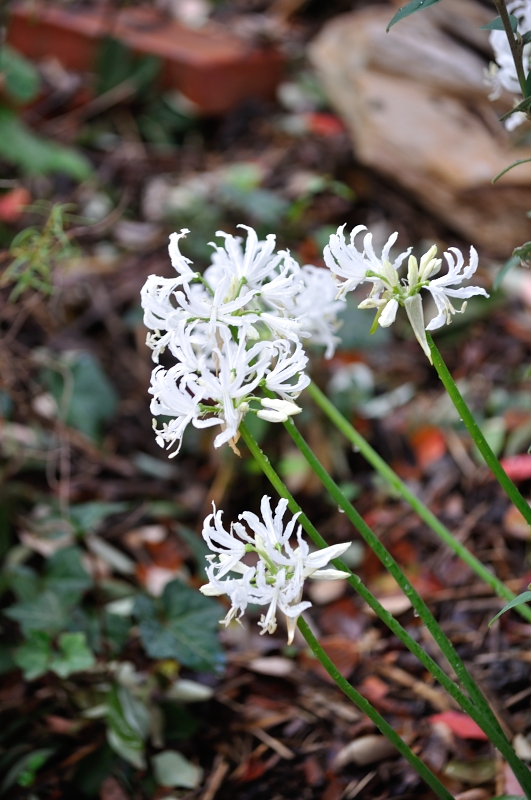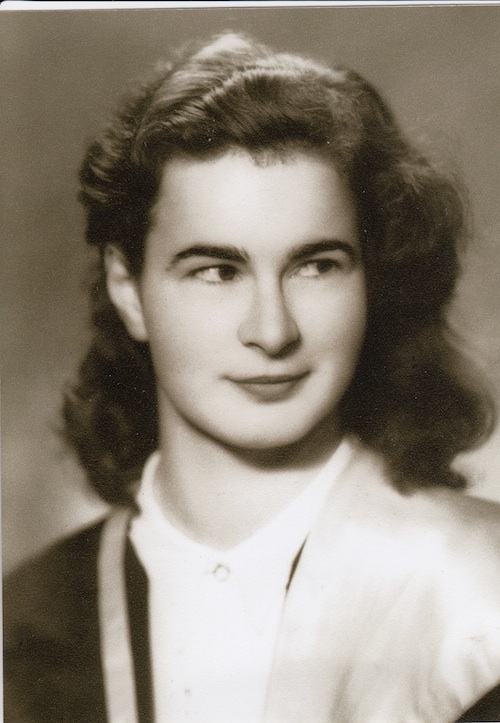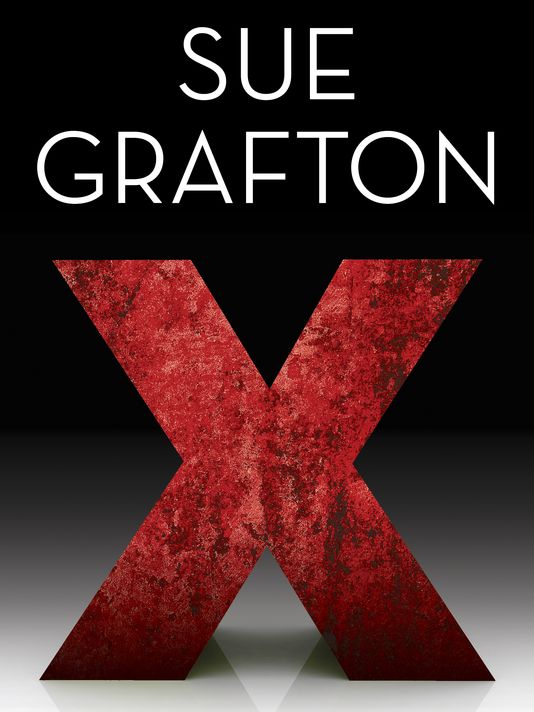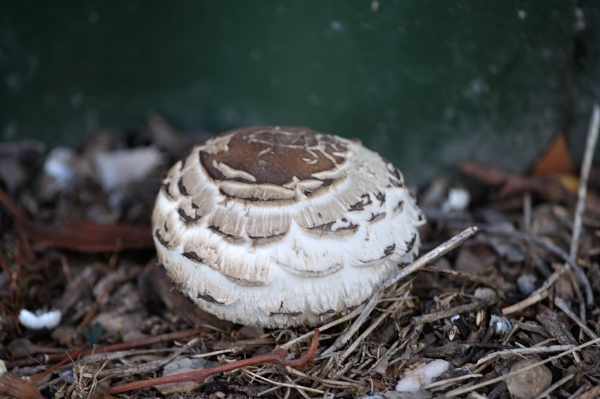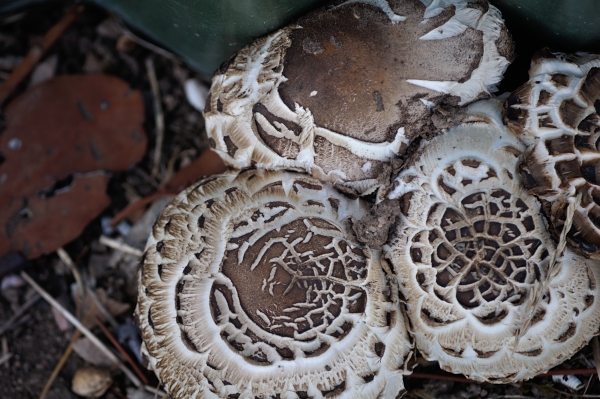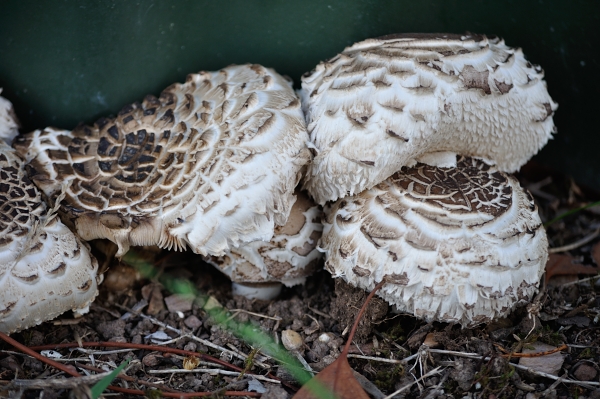-
Recent Posts
Recent Comments
- Kate C on SOMEBODY IS WALKING ON YOUR GRAVE
- Kate C on THE BOOK OF ALCHEMY
- Kate C on THE PLACE OF TIDES
- susan on THE BOOK OF ALCHEMY
- Kate C on THE BOOK OF ALCHEMY
Archives
- December 2025
- November 2025
- October 2025
- September 2025
- August 2025
- July 2025
- June 2025
- May 2025
- April 2025
- March 2025
- February 2025
- January 2025
- December 2024
- November 2024
- October 2024
- September 2024
- August 2024
- July 2024
- June 2024
- May 2024
- April 2024
- March 2024
- February 2024
- January 2024
- December 2023
- November 2023
- October 2023
- September 2023
- August 2023
- July 2023
- June 2023
- May 2023
- April 2023
- March 2023
- February 2023
- January 2023
- December 2022
- November 2022
- October 2022
- September 2022
- August 2022
- July 2022
- June 2022
- May 2022
- April 2022
- March 2022
- February 2022
- January 2022
- December 2021
- November 2021
- October 2021
- September 2021
- August 2021
- July 2021
- June 2021
- May 2021
- April 2021
- March 2021
- February 2021
- January 2021
- October 2020
- September 2020
- August 2020
- July 2020
- June 2020
- May 2020
- April 2020
- March 2020
- February 2020
- January 2020
- December 2019
- November 2019
- October 2019
- September 2019
- July 2019
- June 2019
- May 2019
- April 2019
- March 2019
- February 2019
- January 2019
- December 2018
- November 2018
- September 2018
- August 2018
- July 2018
- June 2018
- May 2018
- April 2018
- March 2018
- February 2018
- January 2018
- December 2017
- November 2017
- October 2017
- September 2017
- August 2017
- July 2017
- June 2017
- May 2017
- April 2017
- March 2017
- February 2017
- January 2017
- December 2016
- November 2016
- October 2016
- September 2016
- August 2016
- July 2016
- June 2016
- May 2016
- April 2016
- March 2016
- February 2016
- January 2016
- December 2015
- November 2015
- October 2015
- September 2015
- August 2015
- July 2015
- June 2015
- May 2015
- April 2015
- March 2015
- February 2015
- December 2014
- November 2014
- October 2014
- September 2014
- August 2014
- July 2014
- June 2014
- May 2014
- April 2014
- March 2014
- February 2014
- January 2014
- December 2013
- November 2013
- October 2013
- September 2013
- August 2013
- July 2013
- June 2013
- April 2013
- March 2013
- February 2013
- January 2013
- December 2012
- October 2012
- August 2012
- July 2012
- May 2012
- March 2012
- January 2012
- October 2011
- September 2011
- August 2011
- July 2011
- June 2011
- May 2011
- April 2011
- March 2011
- January 2011
- December 2010
Categories
Meta
WINTER THINGS
A day of dramatic clouds, rain showers, shafts of bright sunlight, hail, wind, quiet lulls of no weather at all, vast rainbows and then more rain. The coldest day for four years. And the shortest day, too. Walking down into town in light rain, I noticed these winter things:
 Drifts of dead leaves, some sludgy and half-decayed, some light and dark brown and a few a bright startling yellow.
Drifts of dead leaves, some sludgy and half-decayed, some light and dark brown and a few a bright startling yellow.
Dead elm leaves speckled with little insect holes.
Fungi still appearing but people seem to be unable to resist destroying them so there are the wrecked remains of great chunky chubby earthy outgrowths in mahogany brown and sulphurous yellow. But untouched, on a log, I saw a clutch of gorgeous little pearly parasols, poetic and Japanese.
A few leaves hanging on to the trees. As in Shakespeare’s Sonnet 73…
That time of year thou may’st in me behold
When yellow leaves, or none, or few do hang
Upon those boughs which shake against the cold
Bare ruined choirs where late the sweet birds sang…
Posted in Uncategorized
Leave a comment
DAUGHTERS OF EVE
“DNA Nation”, a 3-part series on SBS TV, followed Ernie Dingo, Ian Thorpe and Julia Zmiro as, using DNA mapping of human populations, they discovered the paths taken by their ancestors out of Africa. Last weekend, I watched the last episode and was moved to tears as Ernie Dingo discovered that 40,000 years ago, and more than 1500 generations ago, his mother’s fore-mother was living by the Murchison River in WA. It’s where Ernie’s people come from – really come from.
It’s humbling, too, to think of those ancestors who made the first great sea crossing – from what is now Timor Leste – all those thousands of years ago. The map of human migration led the three travellers from our ancient origins in Tanzania to Arabia, Turkey, India, Khazakistan, Sardinia, Scotland and Timor Leste. Showed how ridiculous any thought of racial purity (and thus, racism) really is.
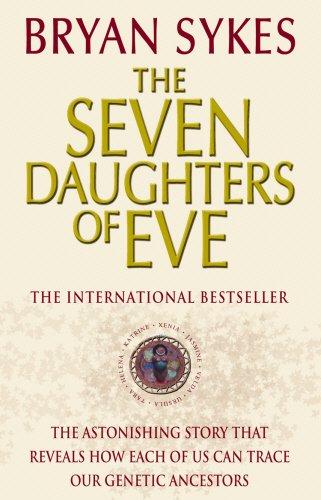 I was chatting about the program to Ross, one of our lovely customers in the shop, and he loaned me a couple of books by Dr Brian Sykes, a world authority on DNA and human evolution. The Seven Daughters of Eve is the story of his research using mitochondrial DNA. This gene passes through the maternal line. Thus, only if Ernie Dingo has a sister, will his mother’s line, unbroken for forty thousands years (what an amazing thought that is!) continue.
I was chatting about the program to Ross, one of our lovely customers in the shop, and he loaned me a couple of books by Dr Brian Sykes, a world authority on DNA and human evolution. The Seven Daughters of Eve is the story of his research using mitochondrial DNA. This gene passes through the maternal line. Thus, only if Ernie Dingo has a sister, will his mother’s line, unbroken for forty thousands years (what an amazing thought that is!) continue.
What I particularly enjoyed about The Seven Daughters of Eve was Syke’s empathy and imagination (not always on display in science writing). He says that his kind of genetics puts the emphasis where it belongs – on individuals.
I am on a stage. Before me, in the dim light, all the people who have ever lived are lined up, rank on rank, stretching far into the distance. They make no sound that I can hear, but they are talking to each other. I have in my hand the thread that connects me to my ancestral mother way in the back. I pull on the thread and one woman’s face in every generation, feeling the tug, looks at me… These are my ancestors. I recognise my grandmother in the front row, but in the generations behind her the faces are unfamiliar to me. I look down the line… I want to ask them each in turn about their lives, their hopes and their disappointments, their joys and their sacrifices… I feel a strong connection. These are all my mothers who passed this precious messenger from one to another through a thousand births, a thousand screams, a thousand embraces of new-born babies. the thread becomes an umbilical cord.
The Seven Daughters of Eve by Brian Sykes, Corgi, London, 2002.
Posted in Uncategorized
Leave a comment
FUNGI WEATHER
The illustration by Rose Ellenby (note the skull and crossbones!) and cover art are from a King Penguin, Poisonous Fungi by John Ramsbottom, Penguin, Harmondsworth 1945.
And another fungi poem…
This is an excerpt from Mushrooms by Sylvia Plath, first collected in The Colossus and Other Poems, William Heinemann, London, 1960.
Overnight, very
Whitely, discreetly,
Very quietly
Our toes, our noses
Take hold on the loam,
Acquire the air.
Nobody sees us,
Stops us, betrays us;
The small grains make room.
Soft fists insist on
Heaving the needles,
The leafy bedding,
Even the paving…
I thought I’d better write a fungi poem of my own…
FUNGI WEATHER
In this dry season
They still come.
Entombed warriors, they wait, massed, in readiness.
It’s their mission –
Rain or no rain,
when the days shorten,
they will rise.
Through ground hard as iron, stony, cracked, compacted
They heave up, giving birth to themselves,
Crowning.
We see a shoulder, an elbow
Or a round white scalp.
Posted in Uncategorized
Leave a comment
COSY
Our prolonged Indian Summer is over at last. It’s six o’clock; I’ve just come in from taking the dog for a walk around the block and my nose feels like it has frozen and may well snap off as it thaws. I was in Montreal in early spring many years ago; it was so cold that I did promise myself not to complain about our winters ever again. Well, I’m not complaining – I’m just noticing. At least we have a warm house. At least we have a house.
There’s something about wintry weather that makes me long for a good cosy, so that’s what I’ve been reading this past week. You may or may not know that the cosy is a sub-genre of crime fiction. If you think of Miss Marple, you’ll get the idea. Amateur sleuth, usually a woman, and the setting that works best is a small town or village or community. There are no mean streets, no jaded PI’s or alcoholic detectives, minimal sex and usually no graphic violence, there is still plenty of death.
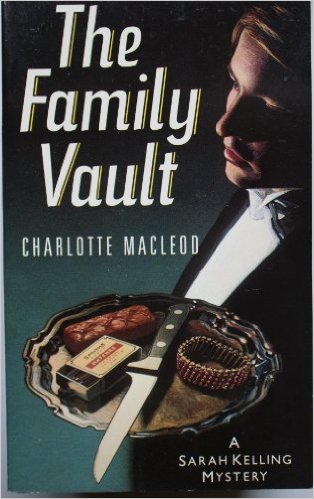 I’ve just been reading the Sarah Kelling mysteries by Charlotte McLeod. A quick stock-take of modus operandi gives us toxic mushrooms, poisoned cocktails, paint stripper, the deliberate withholding of heart medication, bludgeoning with blunt instrument (in one, it was a built-up shoe) or a sharp instrument ( an axe), car brakes that have been tampered with, a quick shove in the back which lands the victim under a train or over a balcony…
I’ve just been reading the Sarah Kelling mysteries by Charlotte McLeod. A quick stock-take of modus operandi gives us toxic mushrooms, poisoned cocktails, paint stripper, the deliberate withholding of heart medication, bludgeoning with blunt instrument (in one, it was a built-up shoe) or a sharp instrument ( an axe), car brakes that have been tampered with, a quick shove in the back which lands the victim under a train or over a balcony…
Motives are the usual – sex and money and reputation. None of which is very cosy at all, really.
The other point of difference with a cosy is that it can be humourous. Even laugh- out- loud funny.
The Sarah Kelling books are stuffed with gorgeously eccentric characters. Absurd Boston blue-bloods abound. Some of them are dotty and delightful – like Uncle Jem, an elderly reprobate who belongs to the Order of the Convivial Codfish. And some of them are snobbish and murderous, like Sarah’s blind and deaf mother-in-law.
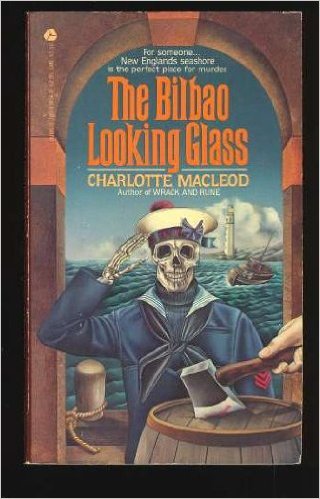 You can have a spot of romance, too, and it doesn’t have to be tragic. Handsome art expert and investigator Max Bittersohn falls for the widowed Sarah and assists her to solve various thefts and murders; it’s not all smooth sailing, however – in The Bilbao Looking Glass, the anti-Semitism of the yacht club crowd comes to an ugly head as they decide she can’t possibly marry a Jew. Elderly cousins and uncles also find love; my favourite courtship is that of twitcher Cousin Brooks and the statuesque sixty-ish beauty Mrs Theonia Sorpende.
You can have a spot of romance, too, and it doesn’t have to be tragic. Handsome art expert and investigator Max Bittersohn falls for the widowed Sarah and assists her to solve various thefts and murders; it’s not all smooth sailing, however – in The Bilbao Looking Glass, the anti-Semitism of the yacht club crowd comes to an ugly head as they decide she can’t possibly marry a Jew. Elderly cousins and uncles also find love; my favourite courtship is that of twitcher Cousin Brooks and the statuesque sixty-ish beauty Mrs Theonia Sorpende.
Charlotte Macleod also wrote as Ailsa Craig.
Posted in Uncategorized
Leave a comment
ART STARTS WITH NOTICING
I am a member of a Council of Adult Education book group, which means that we get boxed sets of books – with reading notes and list of suggested questions – delivered, therefore none of us have to scamper around bookshops and libraries and friends’ bookshelves. If all goes according to plan, we have a whole month in which to read our books; at the meeting we turn in the old (if we want to keep it a bit longer we can) and collect the new. It’s well organised, and it’s easy, and many of us still don’t get our books read on time. That includes me.
I am feeling a bit smug this month because for the first time I am on track. With two full days to spare. However I still left it until the Saturday before the Tuesday meeting to get started. And I am really wondering why. Why didn’t I get stuck in straight away? This was a short book; I could have knocked it off in a couple of nights by the fire. I put it off, and put it off, and read detective novels and watched Midsomer Murders and even (I was tired and emotional) The Real Housewives of Beverly Hills… Knowing that the clock was ticking, I made myself take it with me on a train trip to Melbourne. As it turned out, I loved the book – it was the first of the book group titles I’ve wholeheartedly enjoyed – but still… Is it because reading a book for book group is too much like homework? Not freely chosen? Not chiming in with mood or interests or head-space or free time?
Last minute book panics are not the exception, they’re the rule. People – and I probably should say women, for it seems as if book groups are mostly female – come into the Bookroom all the time, wanting a novel right now, for a meeting the next night or the night after. Today, a customer today said, no, thank-you, I won’t order it, I have to have read it tomorrow evening. She added, further, that there were 10 reserves on that particular title at the library. We were out of stock, no doubt because her fellow readers had fallen upon our new-release table like ravening wolves.
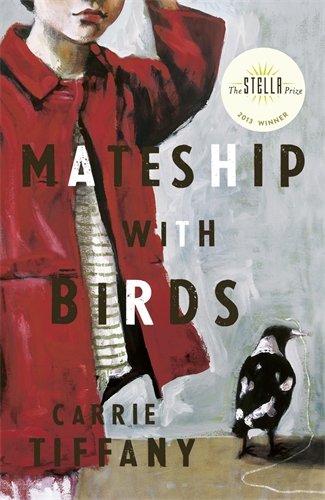 Our book of the month is Mateship with Birds by Carrie Tiffany. It’s one I would never have read off my own bat. The cover doesn’t appeal for some reason- I think it’s the colour – that dull, cool red and grey – and the girl’s down-turned mouth. The title, too… Because of my involvement in the second-hand books trade I’d seen heaps of copies of the 1922 book of bird notes with the same title by naturalist Alec Chisholm. It’s a deeply daggy title.
Our book of the month is Mateship with Birds by Carrie Tiffany. It’s one I would never have read off my own bat. The cover doesn’t appeal for some reason- I think it’s the colour – that dull, cool red and grey – and the girl’s down-turned mouth. The title, too… Because of my involvement in the second-hand books trade I’d seen heaps of copies of the 1922 book of bird notes with the same title by naturalist Alec Chisholm. It’s a deeply daggy title.
And the characters in this novel are deeply daggy too. In a good way. It’s 1950 in rural Victoria. Lonely hard-working farmer Harry watches birds, yearns for his neighbour Betty and cherishes her children Michael and Little Hazel.
It’s about love and lust and desire, with a romance between Betty and Harry that’s weirdly sweet, given all the sweaty physicality going on. It’s also about family – procreation, parenthood, protection, guidance and care – care for the young and also the old, be they human and animals… for around the human family are the family of animals – the dairy herd, the resident kookaburras and the birds at Hazel’s schoo , the sensitive, trembling dog, the one-eyed cat and the crippled heifer, all with their personalities and needs, their moods and emotions. Indeed, from Tiffany’s close, tender, often humourous observation, I finished the book with a sense that animals are people and people are animals. Of course!
It’s an earthy book with lots of sex, death and bodily fluids – and some disturbing scenes of bestiality and exhibitionism thanks to the creepy neighbour Mues – but I often found myself laughing out loud. Harry’s sex education letters to Michael are sad and funny at the same time.
The writing is clear, unfussed and often beautiful. And the excerpts from Harry’s bird notes through the book are sheer poetry. I chose this at random:
The tink tink of the bellbirds
is a constant backdrop
to the day.
The kookaburras assemble and call
as the sun slips from the trees.
Then all is quiet for a while.
It’s only later
that an owl announces itself
out of the dark.
As Carrie Tiffany says, “Art starts with noticing.”
Posted in Uncategorized
Leave a comment
MOTHER’S DAY
Late in life – we, her children, don’t quite know when – my mother wrote several mysterious, beautiful poems. This one was about her mother, Phoebe.
I too sharpen
More and more each year
To my mother’s likeness
I see her
From the corner of my eye
As I pass the mirror
See her reflected
In the glass of pictures
In the brass of trays.
Passivity
You accepted for yourself
But rejected for your child.
From the acceptance
And that rejection
I moved freely
Safely
Happily
You did not break your way through walls of others’ making
But held the torch
And showed the way
And held aside the strangling vine
To let through the lovely light of the sun.
Posted in Uncategorized
Leave a comment
CRIME WAVE
I’ve been reading nothing but crime novels all April.
It’s no coincidence that this crime wave is happening alongside an intense period of work on my new children’s novel. It’s not a Verity Sparks mystery and I’m loving making the acquaintance of my new heroine. At this stage, her name is Alexandra – or Alex – and she is a very different character to Verity. But there’s an insanely complicated plot (the way I like ’em) with mystery and magic, danger and deception, twists and turns and any number of other alliterations to make it – I sincerely hope – a rollicking good read.
While I’m writing like this, I find it hard to commit to a heavy or serious book, but I read for relaxation so the genre of choice is crime. Isn’t it strange? Crime – most often murder – isn’t heavy or serious…it’s relaxing! I don’t think I can even begin to puzzle that out. One explanation I have read is that in crime fiction, the killer is caught, justice is done, the bad are punished, thus giving us an orderly universe unlike messy reality.
I first read the Sue Grafton Alphabet mysteries when they came out, in the 1980s. I stopped somewhere around I or J…I’d got sick of Grafton’s PI Kinsey Milhone, with her prickly independence, junk food addiction, sketchy personal grooming habits and obsession with work. I may have even said something stupid and pretentious like “But she’s not growing.”
Oh, phooey. Re-reading – the library can’t get them to me fast enough – I am enjoying these books much much more than the first time around. I’ve been taking pleasure not just in the plot-puzzle, but the character herself. I ‘get’ Kinsey now, and with each book understand more and more about why she is a junk-food addicted workaholic searcher for truth and justice.
An interesting little factoid… The Alphabet series are set in a Californian city called Santa Theresa. What with the street names, neighbourhoods, topography, geography, I just assumed it was a real place, but no – Grafton set Kinsey there as a homage to the great crime writer Ross MacDonald.It was the fictional territory of his PI Lew Archer.
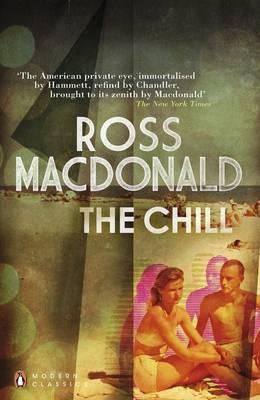 Long ago, I read a lot of MacDonald. He’s the inheritor of Chandler; Lew Archer is, like Philip Marlowe, a knight in tarnished armour but updated to the 1950s and early 60s. I always especially loved the ambience, the small Californian city – on the surface, all palms and beaches and sunshine – but with a dark, dark underside.
Long ago, I read a lot of MacDonald. He’s the inheritor of Chandler; Lew Archer is, like Philip Marlowe, a knight in tarnished armour but updated to the 1950s and early 60s. I always especially loved the ambience, the small Californian city – on the surface, all palms and beaches and sunshine – but with a dark, dark underside.
I’ve just borrowed The Chill from 1963.
It starts like this:
The heavy red-figured drapes over the courtroom windows were incompletely closed again the sun. Yellow day light leaked in and dimmed the electric bulbs in the high ceiling. It picked out random details in the room: the glass water cooler standing against the pannelled wall opposite the jury box. The court reporter’s carmine-tipped fingers playing over her stereotype machine, Mrs Perrine’s experienced eyes watching me across the defense table.
I’m hooked…
Posted in Uncategorized
Leave a comment
AUTUMN
I Seeing these toadstools bursting out of the ground along the side of our neighbour’s fence, I remembered this poem by Margaret Atwood. Very sinister! (This is only part of it.)
MUSHROOMS
i
In this moist season
mist on the lake and thunder
afternoons in the distance
they ooze up through the earth
during the night like bubbles, like
tiny bright red balloons
filling with water;
a sound below sound, the thumbs of rubber
gloves turned softly inside out.
In the morning, there is the leafmould
starred with nipples,
with cool white fishgills,
leathery purple brains,
fist-sized suns dulled to the colour of embers
poisonous moons, pale yellow.
ii
Where do they come from?
For each thunderstorm that travels
overhead there’s another storm
that moves parallel in the ground.
Struck lightning is where they meet.
from True Stories by Margaret Atwood Jonathan Cape 1982
Posted in Uncategorized
Leave a comment
AUTUMN BREAK
We’ve just had three nights away – at a little cottage in Dean’s Marsh, in the Otways.

There was really nothing to do, which was wonderful. I read detective novels, drank tea in the daytime and wine at night, watched DVDs and had the odd little totter of a walk.
I have a book to finish by late November, which seems like a lot of time, but isn’t. So it was my Autumn Break. Now, time to get serious…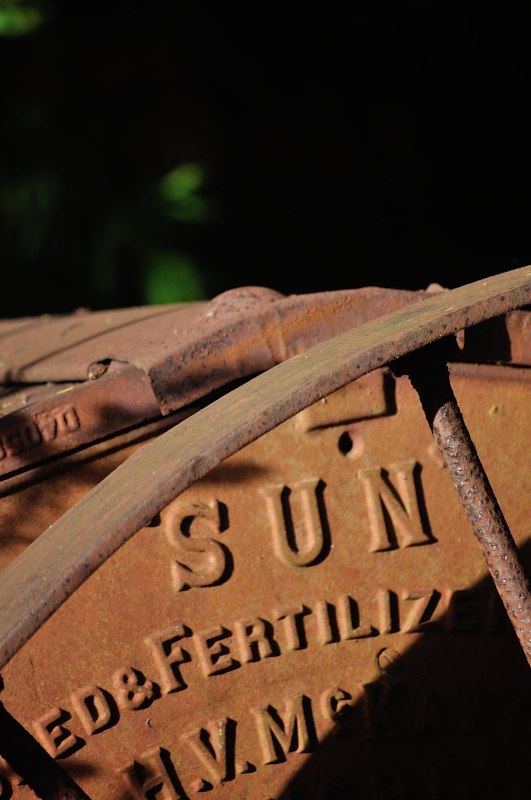
Posted in Uncategorized
Leave a comment

